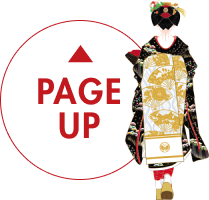TOPICS
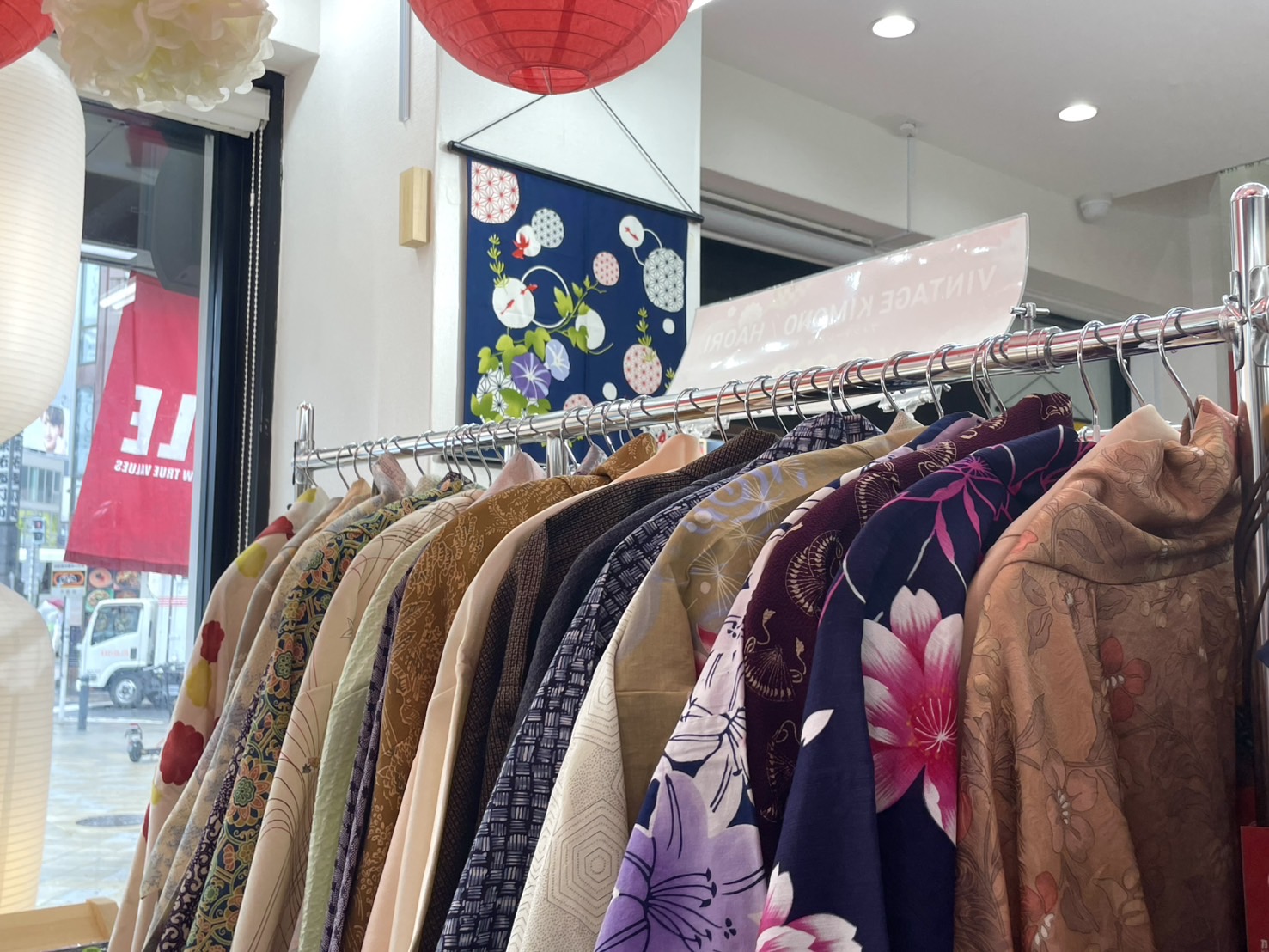
New Arrival: Vintage Kimono & Haori!
As the weather cools down, vintage haori jackets are becoming a must-have for fall!
Haori lets you enjoy the beauty of kimono in a casual and stylish way — perfect for adding a touch of Japanese elegance to your outfit.
We carefully select only high-quality vintage items, so you can shop with confidence.
Come visit us and find your perfect piece!
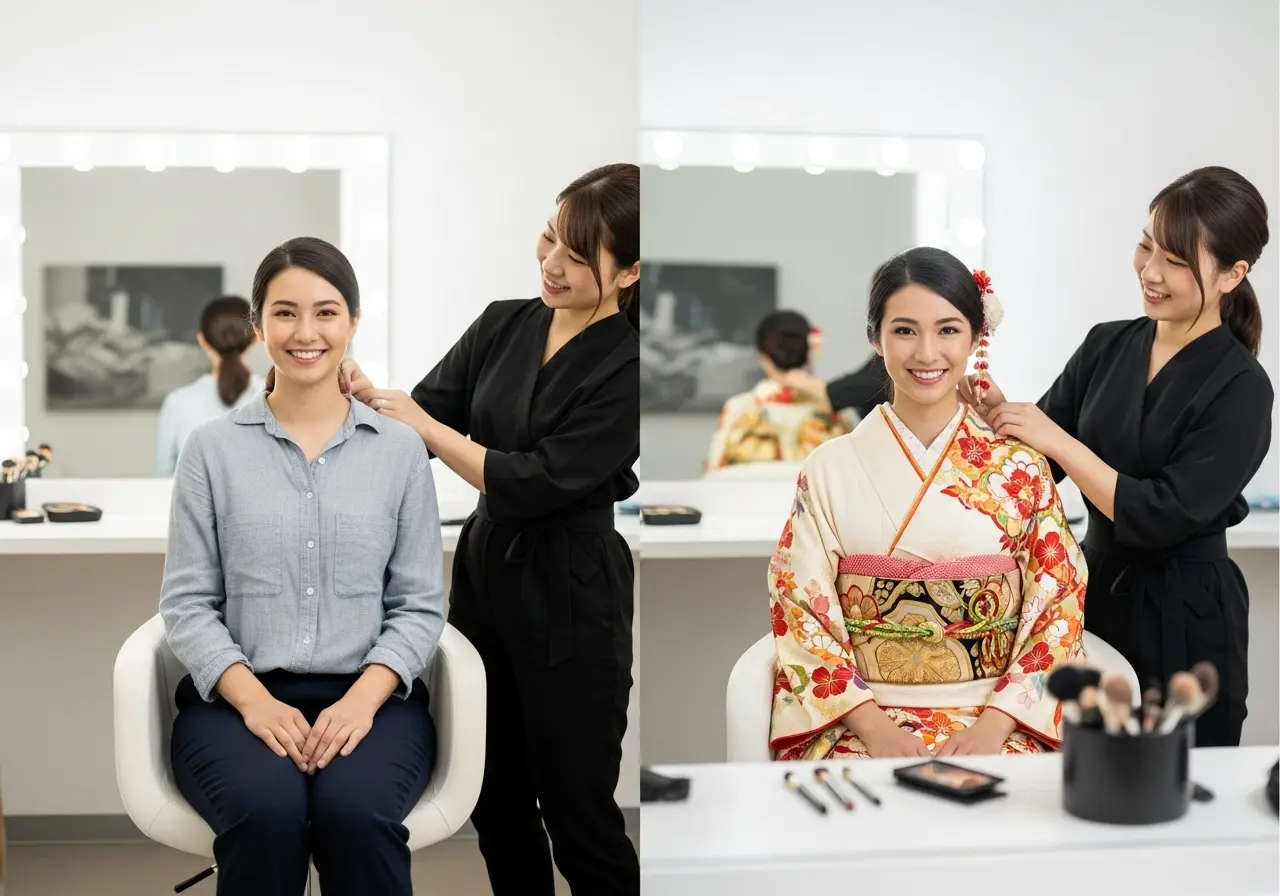
The Kimono Transformation Playbook Plan, Shoot, and Share Your Before/After—Beautifully and Ethically
You don’t need staged reviews to feel the magic of wearing a kimono.
This guide shows you how to plan your look, capture your own before/after photos, and tell a meaningful story—while respecting privacy and culture.
1) What “Transformation” Really Means
Styling: color, pattern, accessories, and hair come together as one composition.
Posture: small steps, a long spine, relaxed shoulders—your silhouette changes.
Mindset: you slow down and notice details; that calm shows in photos.
2) Your DIY Before/After Shot List (Phone Only, No Crew Needed)
Aim for 6–10 frames. Keep the angles consistent between “before” (street clothes) and “after” (kimono).
Full-length, front — neutral wall or shop backdrop; same pose before/after.
Three-quarter with obi — turn 30–45°; show the obi design clearly.
Detail macro — sleeve edge, obi knot, obijime texture.
Hands & props — sensu (folding fan) or kinchaku pouch.
Hair focus — bun/chignon/kanzashi close-up.
Walking shot — small steps on a lane (Hozenji Yokocho is ideal).
Reflection — canal railing or shop mirror; aligns well in Dotonbori.
Back view — showcase the obi and collar line.
Seated posture — bench or low step; elegant hands on lap.
Golden hour portrait — soft side light along the river.
Pro tip: Lock your exposure (AE/AF lock) on the face or obi; keep ISO low; shoot a quick burst to avoid blink.
3) Posing Basics (Solo / Pair / Group)
Solo: chin slightly down, eyes to the side; keep elbows away from body to reveal sleeve drape.
Pair: stagger heights; one faces camera, one in profile showing obi.
Group: create a gentle “V” shape; center person slightly forward; avoid parallel feet—turn toes 15° outward.
4) Hair & Accessory Tweaks That Pop on Camera
One statement only: bold kanzashi or colorful obijime—never both.
Color echo: match a hair ornament to a minor color in the kimono pattern.
Texture contrast: matte obi + glossy hairpin, or lace collar + pearl pin for depth.
5) Light & Timing in Osaka
Morning (soft, clean): Hozenji Yokocho’s lanterns and stone paths.
Golden hour (warm, flattering): Dotonbori canal edges.
Blue hour / night (dramatic): neon signs; meter for highlights so colors don’t blow out.
6) Privacy-First Photography
Face-optional angles: back view, profile with fan, hands/obi macro。
Consent: if others are identifiable in the frame, ask before posting.
Sacred spaces: follow shrine/temple rules; no blocking worship routes; no tripods where prohibited.
7) Caption Templates (Steal & Personalize)
“From sneakers to silk—today I slowed down and walked on purpose.”
“Pattern, texture, and tiny knots: elegance lives in the details.”
“A different pace, a different posture—Osaka looked new from here.”
“Borrowed tradition, genuine memory.”
“I came for photos; I left with a story.”
8) Pack & Day-Of Checklist
Phone with space, portable battery, lens cloth
Minimal wallet/keys in kinchaku; large bags left at shop
Weather plan: sun cover, light shawl/haori in winter, clear umbrella for rain
Return time confirmed before heading out
9) How Kawaii Osaka Helps
At Kawaii Osaka, staff can:
Suggest color/pattern combos that read well on camera
Style hair and select one standout accessory
Mark a simple route (Dotonbori → Hozenji → canal) with best light windows
Store your luggage so you can move light and shoot freely
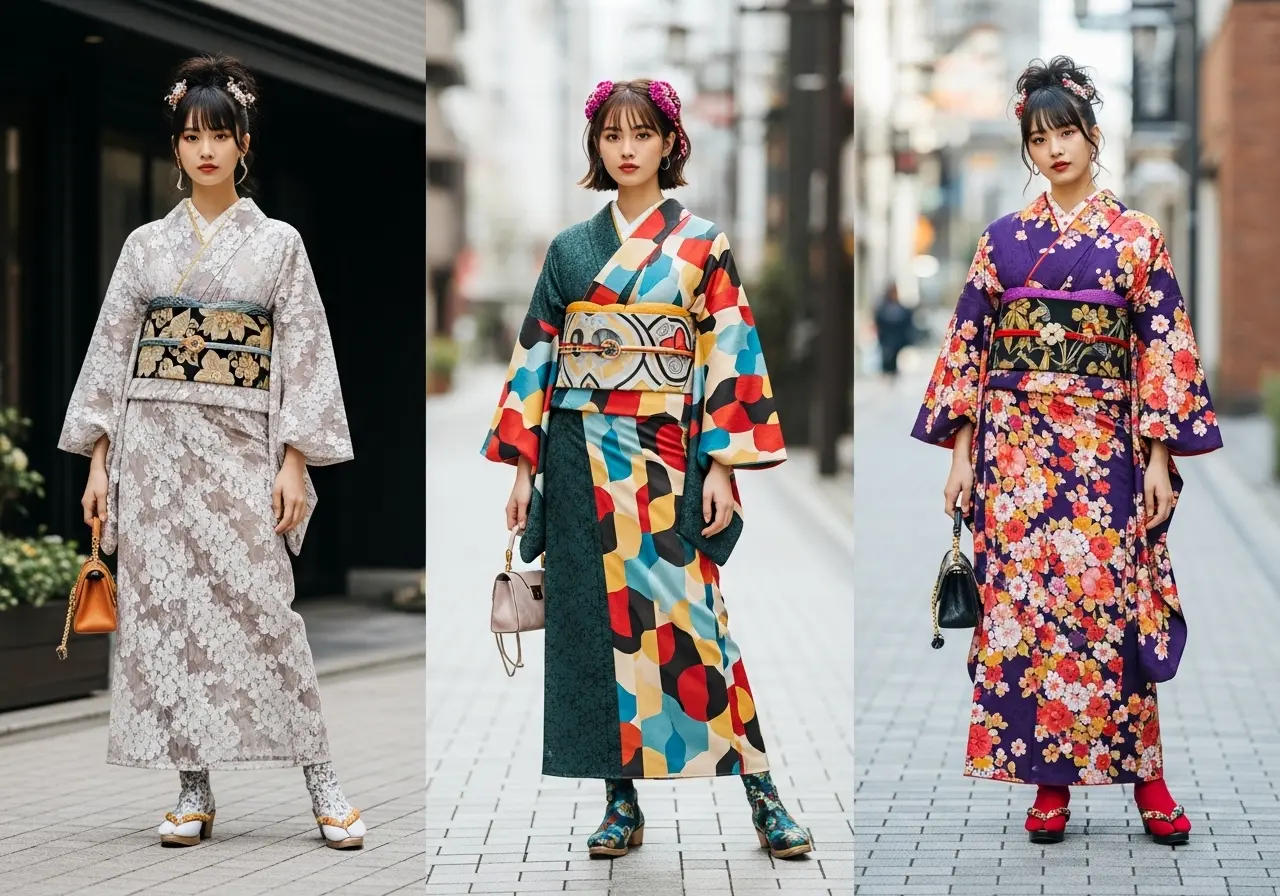
Kimono Trends in 2025: Lace Kimonos, Retro-Modern Styles, and Vibrant Patterns
Discover the Latest Designs Shaping Japan’s Fashion-Forward Kimono Scene
The kimono has never stopped evolving.
In 2025, traditional elegance meets contemporary creativity—resulting in styles that are photogenic, expressive, and perfectly suited for modern travelers.
Whether you love subtle sophistication or bold colors, there’s a trend for you.
Here’s a look at the most popular kimono styles trending across Japan this year, inspired by fashion magazines, rental shops, and social media.
1. Lace Kimonos – A Delicate Fusion of East and West
What it is:
A modern twist on the classic kimono, made with transparent lace fabrics layered over inner garments. The look is romantic, light, and perfect for photos.
Why it’s trending:
Featured frequently in Japanese fashion magazines such as Kimono Walker and Bijin Hyakka
Popular among younger generations and influencers on Instagram and TikTok
Combines Western elegance with Japanese tradition—ideal for spring and summer shoots
How to wear it:
Pair with pastel inner layers and light obi belts
Add pearl accessories or lace gloves for a vintage touch
Recommended for wedding photos, anniversaries, or soft romantic themes
Where to find it:
Kawaii Osaka offers curated lace kimono sets that balance beauty and comfort—perfect for photoshoots in Dotonbori’s riverside glow.
2. Retro-Modern Kimono – Nostalgia Meets Contemporary Chic
What it is:
Inspired by Japan’s Taisho and Showa eras, these kimonos feature geometric patterns, large florals, and bold color contrasts. They blend nostalgia with modern flair.
Why it’s trending:
Loved by both locals and tourists for its “vintage Japan” look
Featured in themed photoshoots and café experiences
Offers a strong visual impact, especially for cityscapes like Osaka or Kyoto
How to wear it:
Pair with wide obi belts in contrasting colors
Add berets or Western-style accessories for a playful mix
Perfect for those who want a standout Instagram look
Example:
Shops in Kyoto’s Gion and Tokyo’s Asakusa are reporting high demand for retro-modern styles—proof this trend is here to stay.
3. Colorful Patterns – Express Yourself Boldly
What it is:
A joyful return to vibrant, expressive designs—from rainbow hues to oversized florals and artistic prints.
Why it’s trending:
Reflects a shift toward individual expression
Popular with international visitors who want bright, energetic photos
Inspired by pop culture and contemporary Japanese art
How to wear it:
Combine with simple obi belts to balance the look
Choose modern hairstyles with minimal accessories
Works beautifully against Osaka’s neon backdrops
Example:
Fashion influencers in 2025 are pairing vivid kimono prints with street-style shoes and minimal bags—creating a new genre of “urban kimono fashion.”
4. Sustainability and Custom Styling
Emerging movement:
2025 also sees a rise in eco-conscious kimono rentals, featuring recycled fabrics, vintage revivals, and personal styling services.
Kawaii Osaka focuses on quality over quantity, maintaining each kimono through expert cleaning and offering personal consultations so guests can choose a style that fits their personality and purpose.
How to Experience These Trends
At Kawaii Osaka
, you can explore the latest trends with the help of professional stylists.
Whether you want:
A soft, romantic lace look
A vintage-inspired retro outfit
A bold, colorful statement style
Our team will help you choose, dress, and accessorize—so your outfit feels as authentic as it is fashionable.
Final Thoughts
The kimono continues to evolve, reflecting the creativity of each generation.
In 2025, it’s not just a cultural garment—it’s a canvas for self-expression.
From delicate lace to retro charm and color explosion, today’s kimono scene offers endless ways to celebrate tradition in a modern world.
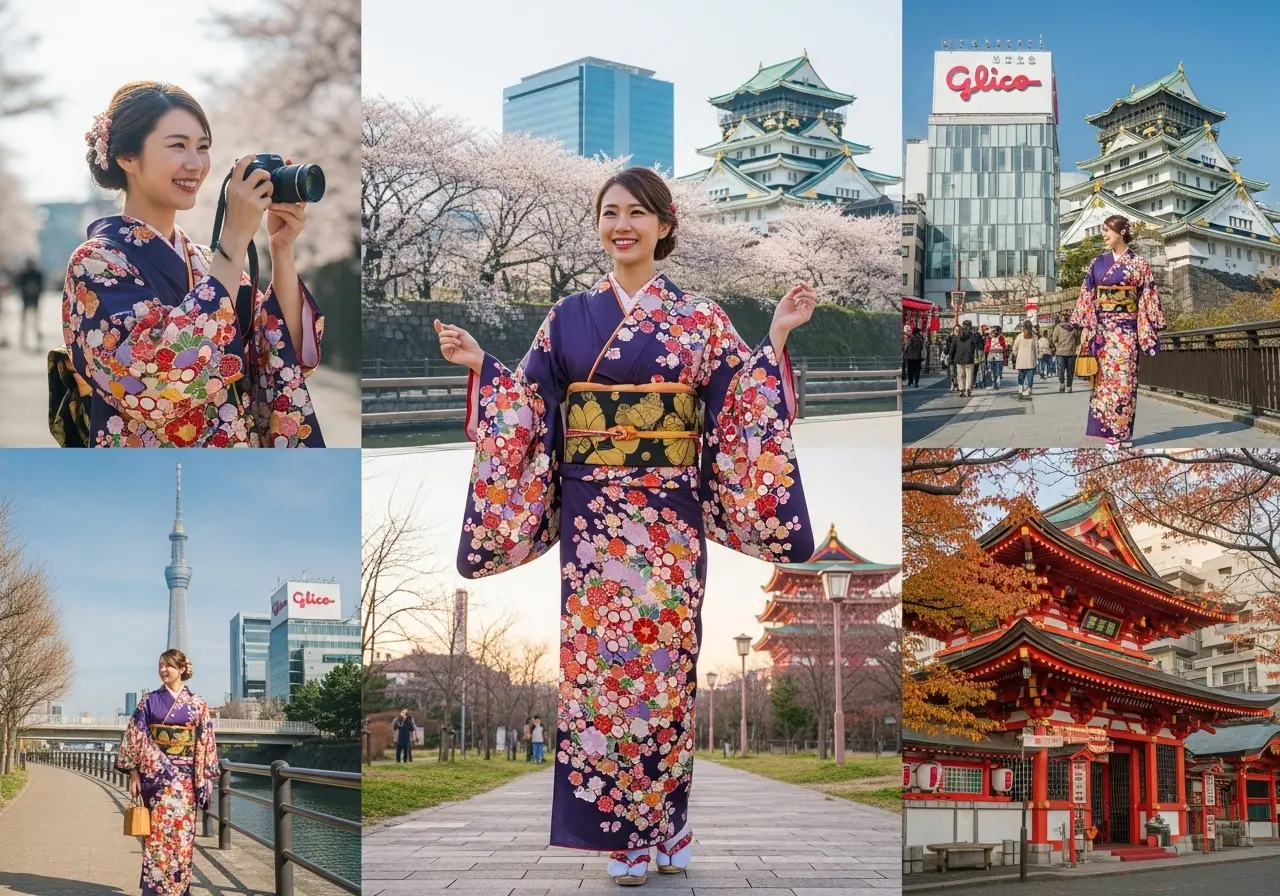
One-Day Kimono Experience in Osaka: A Perfect Sightseeing Itinerary
From Morning Dressing to Night Return – A Complete Guide for First-Time Visitors
Wearing a kimono in Osaka is more than just a photo opportunity—it’s a way to experience Japan’s history, culture, and hospitality in one unforgettable day.
To help you make the most of your trip, here’s a sample itinerary that combines sightseeing, delicious food, and beautiful photo spots—all while wearing a kimono from Kawaii Osaka
.
Morning: Start Your Day at Kawaii Osaka (10:00 AM)
Begin your adventure at Kawaii Osaka, conveniently located near Dotonbori.
Friendly staff will guide you through the process of choosing your kimono, coordinating accessories, and arranging your hair.
What to expect:
Professional dressing and styling (about 45 minutes)
Assistance with choosing colors, patterns, and accessories
Secure storage for your personal belongings
By around 10:45 AM, you’ll be fully dressed and ready to explore—feeling elegant, confident, and photo-ready.
Late Morning: Explore Dotonbori and Hozenji Yokocho (11:00 AM – 12:00 PM)
Step out into Dotonbori, one of Osaka’s most vibrant districts.
Take photos by the Glico Sign, stroll along the canal, and soak in the lively energy of the city.
Then wander into Hozenji Yokocho, a hidden stone-paved alley with traditional lanterns and the famous moss-covered Hozenji Temple—a perfect blend of old and new Osaka.
Photo Tip: Early morning light is soft and flattering for kimono photos.
Lunch: Traditional Japanese Dining (12:30 PM – 1:30 PM)
Enjoy a delicious lunch at a nearby restaurant that matches your elegant outfit.
Recommended options:
Kushikatsu Daruma (Shinsaibashi) – Osaka’s famous skewers
Hozenji Sanpei – authentic udon in a cozy alley
Tempura or sushi restaurants near Dotonbori
Take your time to relax and savor local flavors while staying comfortable in your kimono.
Afternoon: Osaka Castle or Sumiyoshi Taisha Shrine (2:00 PM – 4:30 PM)
For a classic photo experience, take a short subway ride to Osaka Castle Park.
The stunning castle tower surrounded by gardens is ideal for wide shots that capture both elegance and history.
Alternatively, visit Sumiyoshi Taisha Shrine, one of Japan’s oldest shrines, with its iconic red bridge and peaceful atmosphere—perfect for calm, traditional photos.
Tip: Walk slowly and gracefully—every step becomes part of the experience.
Late Afternoon: Coffee Break and River Walk (5:00 PM)
Head back toward the Namba area and stop for a Japanese-style café or matcha dessert.
Enjoy a short rest at places like Nana’s Green Tea or a riverside café near Dotonbori.
This is also a great time to review your photos and capture golden hour light along the river.
Evening: Return Your Kimono and Reflect (6:00 PM – 7:00 PM)
Return to Kawaii Osaka for a smooth and easy kimono return.
Staff will assist you with changing and returning accessories.
You can pick up your belongings, relax, and head out for dinner in casual clothes.
Many guests say this moment—taking off the kimono after a full day—is when they truly appreciate the experience.
Optional Night Plan: Dinner in Namba or Shinsaibashi
If you still have energy, finish your day with an Osaka-style dinner:
Okonomiyaki Mizuno – local favorite for savory pancakes
Dotonbori Konamon Museum – try making your own takoyaki
Namba Parks – rooftop dining with night views
Why Choose Kawaii Osaka
Central location near major sightseeing spots
Wide selection of kimonos and accessories
Professional stylists for a flawless look
Secure storage and flexible return options
Multilingual support and friendly guidance
With a full-day plan like this, you can see, taste, and feel Osaka—all while wrapped in Japanese tradition.
Final Thoughts
A kimono day in Osaka isn’t just sightseeing—it’s a cultural journey through time.
From the quiet alleys of Hozenji to the grandeur of Osaka Castle, every step becomes a memory.
Start your adventure at Kawaii Osaka, and let the city become your stage.
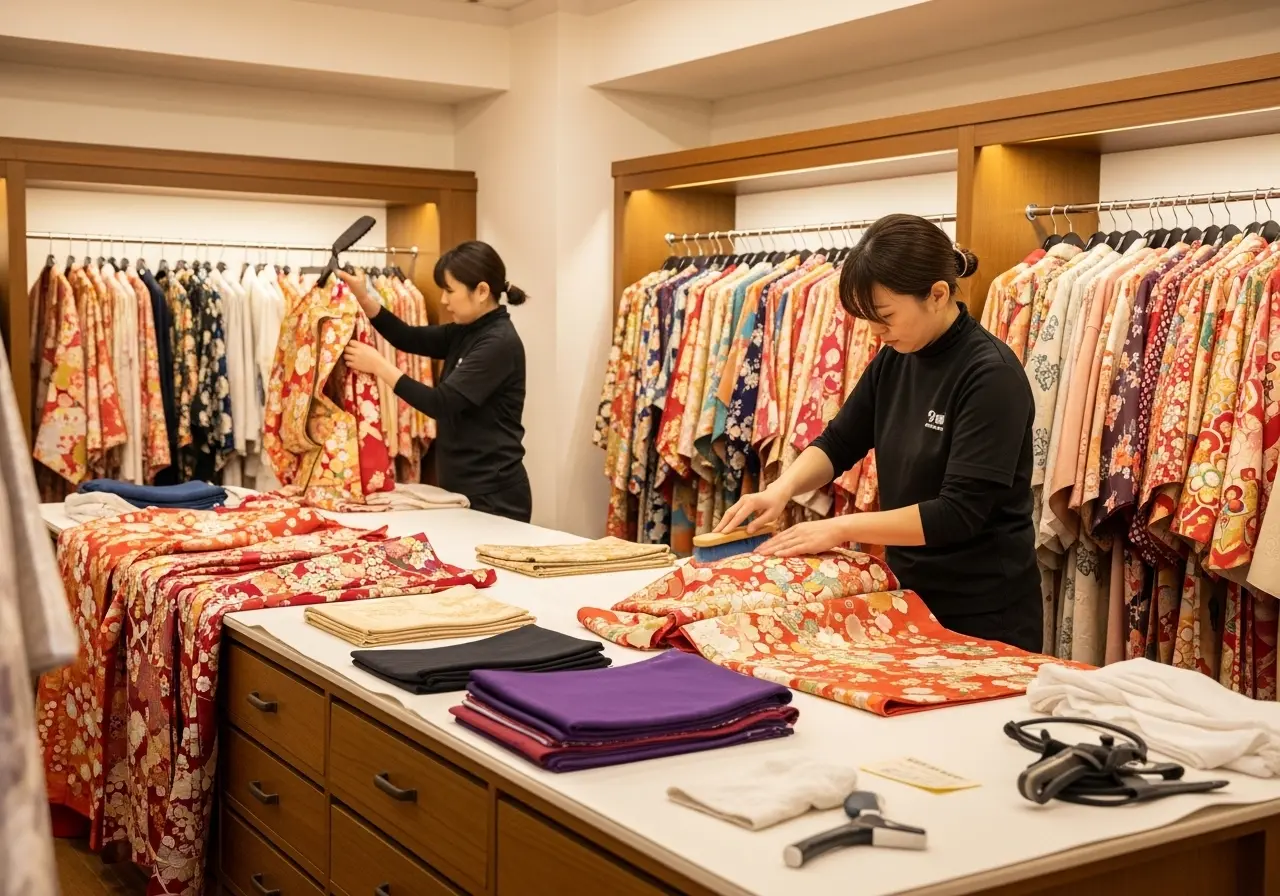
Behind the Scenes of Kimono Rentals: How We Clean, Maintain, and Care for Every Piece
What You Should Know About the Hidden Work That Keeps Every Kimono Beautiful
When you rent a kimono, it may look effortlessly elegant—but behind that beauty is a careful, professional process that ensures every guest enjoys a fresh, clean, and flawless outfit.
If you’ve ever wondered, “How clean are rental kimonos?” or “What happens after they’re returned?”—this guide will take you behind the scenes of the kimono rental industry.
At Kawaii Osaka
, we take pride in the craftsmanship and care that go into maintaining each kimono so you can wear it with confidence.
1. Professional Cleaning After Every Use
Every kimono is cleaned immediately after it’s returned.
Because the fabrics are often delicate silk or fine cotton, they are not washed in regular machines.
Instead, they undergo specialized dry cleaning or hand washing by professional kimono cleaners.
Key steps:
Each item is inspected for stains or damage
Proper cleaning methods are chosen depending on the fabric and dye
Items are carefully ironed and restored to their original form
This ensures every kimono looks as beautiful for the next guest as it did on day one.
2. Expert Stain Removal and Spot Treatment
Accidents happen—small stains from makeup, food, or drinks are common.
That’s why we use traditional Japanese spot-cleaning techniques called shimi-nuki, which remove stains without damaging the fabric.
Our staff:
Checks every seam, collar, and sleeve for marks
Uses gentle, fabric-safe solvents
Restores the color and texture to keep the kimono looking new
Even the tiniest detail is checked before the kimono is placed back into service.
3. Fragrance and Freshness Care
Cleanliness is more than just washing—it’s also about feeling fresh.
We air out every kimono and use odor-neutralizing treatments to remove any lingering scents.
The result is a kimono that smells clean and feels comfortable, even on hot days.
Some fabrics also receive light steaming to refresh their texture and ensure a pleasant, natural scent.
4. Proper Storage and Fabric Preservation
Kimono fabrics are sensitive to humidity and sunlight, so we store them in climate-controlled rooms using breathable covers.
This prevents color fading, mold, and wrinkles.
Each piece is folded in the traditional way (tatoushi style) to maintain its shape.
By rotating our collection and inspecting regularly, we keep every kimono in perfect condition.
5. Seasonal Checks and Repairs
Throughout the year, we perform seasonal inspections.
If a kimono shows signs of wear, it’s sent for professional repair or retired from the rental lineup.
Obi belts, accessories, and undergarments are also replaced regularly to maintain hygiene and quality.
6. What This Means for You
When you rent from Kawaii Osaka, you’re not just wearing a kimono—you’re wearing a piece that’s been cared for with dedication and expertise.
Our process ensures:
Every outfit is clean, fresh, and perfectly pressed
Fabrics remain soft and comfortable
You can enjoy the experience worry-free
We want every guest to feel as if they’re wearing a brand-new kimono—because that’s the standard we aim for.
7. Our Promise
We believe that true hospitality begins with respect for the garment and for the guest who wears it.
By investing time and skill into maintenance, we preserve the elegance of Japanese tradition for everyone to enjoy.
So when you step out in a kimono from Kawaii Osaka, you can trust that it’s clean, carefully maintained, and ready to shine in your photos.
Learn more and reserve your kimono experience
Final Thoughts
The beauty you see on the outside is supported by countless careful steps behind the scenes.
From stain removal to storage, every detail reflects the Japanese spirit of craftsmanship—monozukuri.
It’s this unseen dedication that allows you to enjoy your kimono experience with peace of mind.
